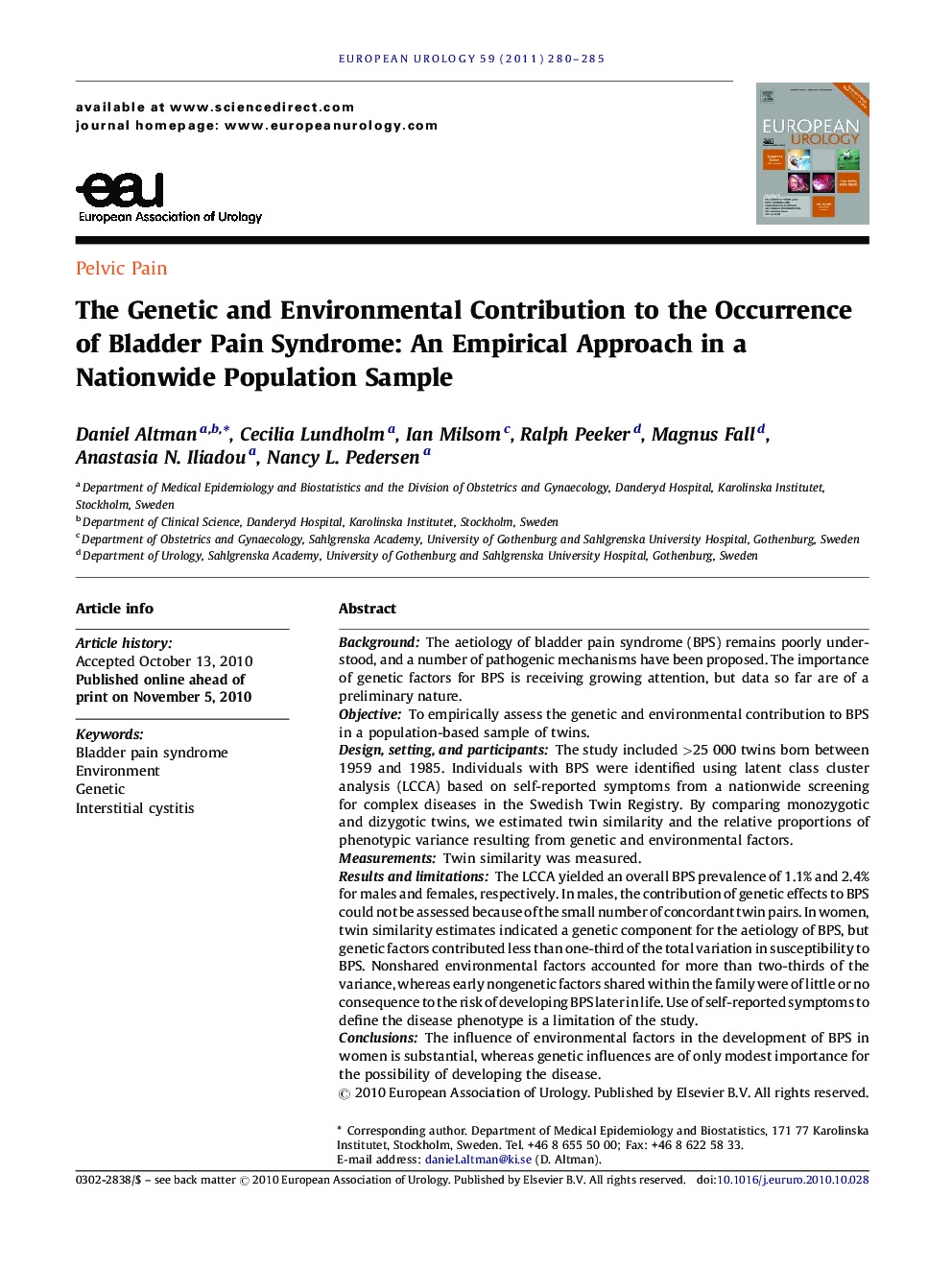| کد مقاله | کد نشریه | سال انتشار | مقاله انگلیسی | نسخه تمام متن |
|---|---|---|---|---|
| 3925807 | 1253135 | 2011 | 6 صفحه PDF | دانلود رایگان |

BackgroundThe aetiology of bladder pain syndrome (BPS) remains poorly understood, and a number of pathogenic mechanisms have been proposed. The importance of genetic factors for BPS is receiving growing attention, but data so far are of a preliminary nature.ObjectiveTo empirically assess the genetic and environmental contribution to BPS in a population-based sample of twins.Design, setting, and participantsThe study included >25 000 twins born between 1959 and 1985. Individuals with BPS were identified using latent class cluster analysis (LCCA) based on self-reported symptoms from a nationwide screening for complex diseases in the Swedish Twin Registry. By comparing monozygotic and dizygotic twins, we estimated twin similarity and the relative proportions of phenotypic variance resulting from genetic and environmental factors.MeasurementsTwin similarity was measured.Results and limitationsThe LCCA yielded an overall BPS prevalence of 1.1% and 2.4% for males and females, respectively. In males, the contribution of genetic effects to BPS could not be assessed because of the small number of concordant twin pairs. In women, twin similarity estimates indicated a genetic component for the aetiology of BPS, but genetic factors contributed less than one-third of the total variation in susceptibility to BPS. Nonshared environmental factors accounted for more than two-thirds of the variance, whereas early nongenetic factors shared within the family were of little or no consequence to the risk of developing BPS later in life. Use of self-reported symptoms to define the disease phenotype is a limitation of the study.ConclusionsThe influence of environmental factors in the development of BPS in women is substantial, whereas genetic influences are of only modest importance for the possibility of developing the disease.
Journal: European Urology - Volume 59, Issue 2, February 2011, Pages 280–285